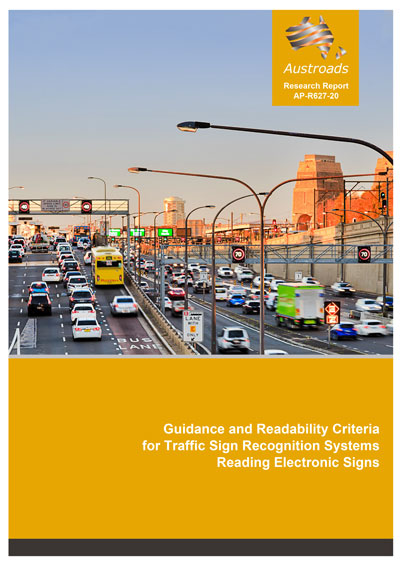Monday, 24 August 2020

Austroads has published a research report describing the technical criteria that can improve the readability of electronic signs by Traffic Sign Recognition systems.
Traffic sign recognition (TSR) systems are key to the effective operation of vehicles with automated driving and advanced driver assistance. These systems warn drivers when they exceed speed limits and in some cases control vehicle speeds. The systems continue to evolve as manufacturers work towards fully autonomous vehicles.
The expansion of the Australasian New Car Assessment Program (ANCAP) safety rating process in January 2018 compelled manufacturers to include TSR technology in their models to achieve a 5-star ANCAP rating.
This project builds on an Austroads project completed in 2018, which found that TSR systems could not consistently read electronic signs and proposed further investigations and changes to Australian and New Zealand Standards for road traffic signs.
Since then, Standards Australia addressed some of the TSR readability issues with updates to AS 4852.1 Variable message signs, Fixed, AS 4852.2 Variable message signs, Part 2: Portable signs and AS 5156 Electronic speed limit signs. New Zealand’s electronic signage specifications are also being reviewed.
The research found that LED flicker is the primary issue for readability by TSR systems. Signs with changing or flickering illumination can distort the reading. Different types of flickering can occur in different sign types and across different sections of a sign.
The research also found that multiplexed displays can affect the performance of camera-based TSR systems. This can be addressed with in-camera LED flicker mitigation. However, there is no consensus within the automotive imaging industry as to the level of mitigation required and there are no formalised standards for LED flicker metrics.
The report anticipates that the next steps will be to:
- revise transport agency specifications to align with the updated AS 4852.1, AS 4852.2 and AS 5156.
- harmonise testing and certification procedures with standards for Automotive Vision Systems being developed by the IEEE P2020 Working Group
- consider incremental retrofitting of existing assets where needed.
The types of retrofitting options range from simple firmware updates to more complex replacements of hardware, with costs varying significantly depending on the manufacturer, model and number of devices in each jurisdiction.
Some transport agencies have started implementing the report’s recommendations. The report recognises that a transition process may be needed to determine the priorities and resources of each agency. The program for implementing and funding these changes will be at the discretion of each jurisdiction, recognising it is likely that this process will occur under existing maintenance programs.
Download Guidance and Readability Criteria for Traffic Sign Recognition Systems Reading Electronic Signs
